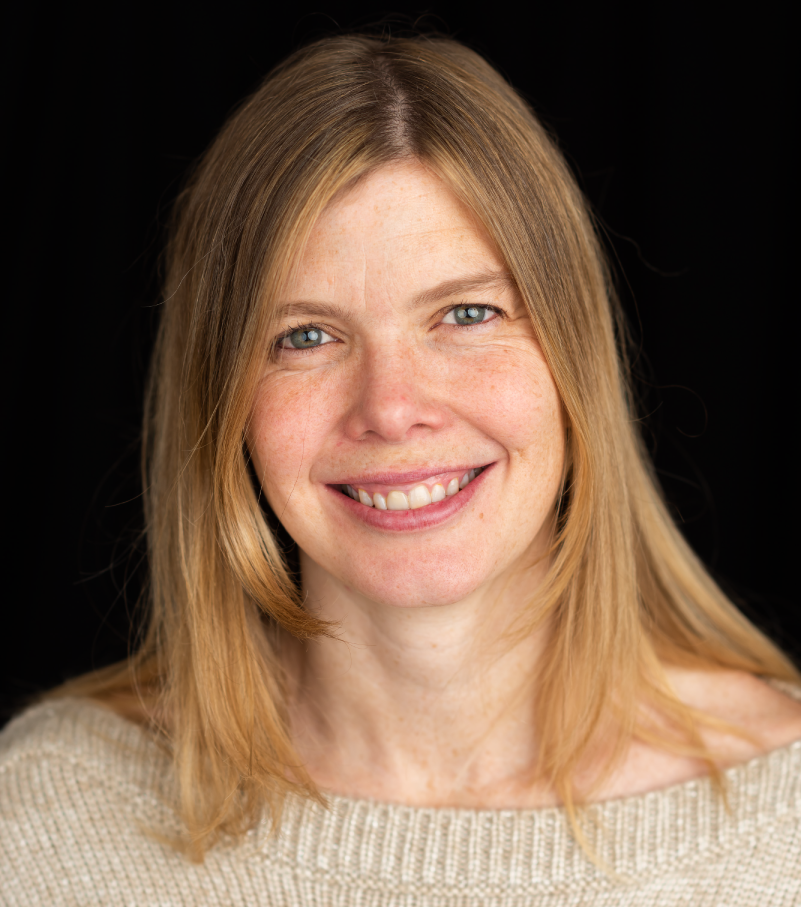I am a senior scientist in the Genome Regulation Observatory at the Broad Institute. I am broadly interested in using cutting edge technology, such as deep learning, to create analysis and visualization tools that facilitate fundamental discovery in gene regulation. My current focus is on analysis of single cell multiomics and perturbation assays to elucidate cell-type specific function. The most up to date list of my publications can be found at Google Scholar.
From 2012-2021, I was the chief computationalist in Erez Lieberman Aiden's group, where I created the Juicer pipeline for turning raw sequence reads into Hi-C maps that can annotated and analyzed easily and the Juicebox visualization software for easy exploration of complex data. This software is a crucial tool for interrogating the 3D genome and led to the discoveries we made about loops and extrusion in our 2014 paper in Cell and 2015 paper in PNAS. You can watch my talk about our work below, see a cute video explanation, or download the software.
Previously, I was a postdoctoral associate at MIT CBCL, working in Tommy Poggio's lab. My research focused on computer vision, specifically object and activity recognition.
From March 2009 to September 2010, I held a postdoc at WILLOW, an INRIA/ENS project, working under the supervision of Josef Sivic, Ivan Laptev, and Andrew Zisserman. My research project involved automatically recognizing attributes in unconstrained video.
I earned the Ph.D. from the University of Washington in March 2009. I worked in a number of different areas, including accessibility, human-computer interaction, multimedia, auction theory, and data compression. My dissertation research was on activity analysis of sign language video and was a part of the ongoing Mobile ASL project, in which we compress sign language video to enable mobile phone communication for deaf people. My advisors were Richard Ladner and Eve Riskin.
Application materials
Curriculum vitae
Single cell multiomics
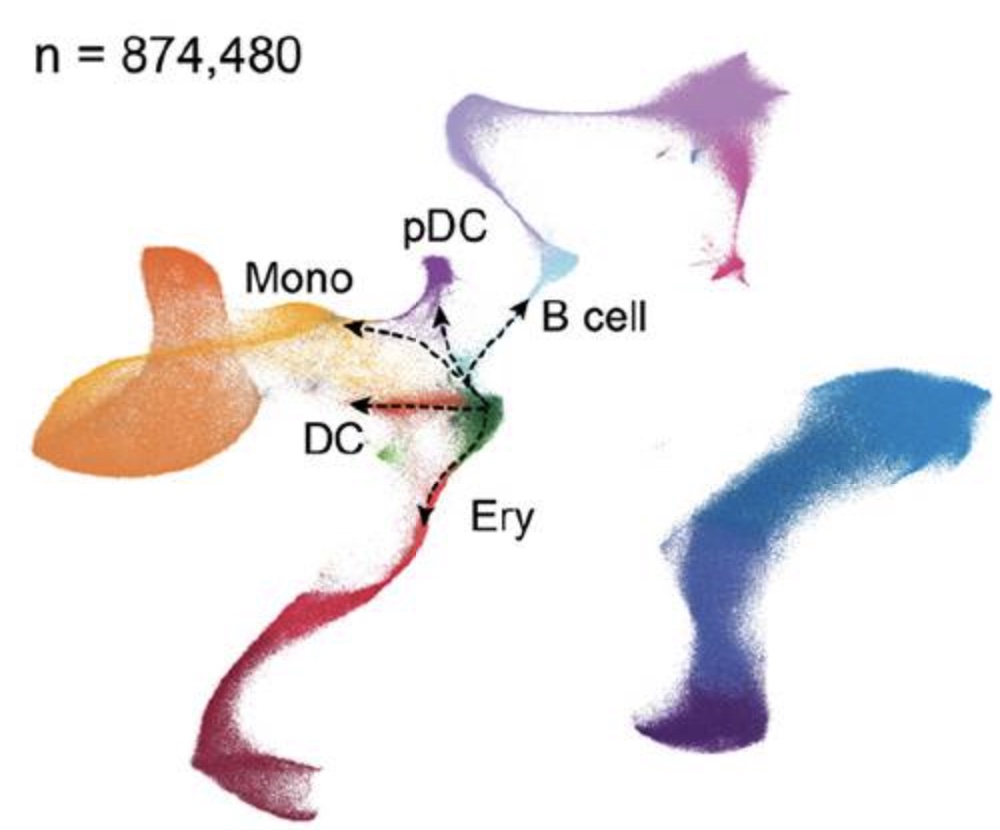 Cells all share the same DNA and yet different cell types have vastly different functions. How are genes regulated? What elements determine if a cell grows normally or becomes cancerous? Via assays such as SHARE-seq, which interrogates chromatin accessibility and gene expression in the same single cells, and CROP-seq, which activates or deactivates distal elements, we explore the epigenetic landscape of cell regulation. We have built a pipeline for processing SHARE-seq and other multiomic assays, such as 10x. We are utilizing a new deep learning method to identify where transcription factors are binding. We are also exploring specific genomic loci via perturbation in order to elucidate the factors driving cellular senescence and cancer.
Cells all share the same DNA and yet different cell types have vastly different functions. How are genes regulated? What elements determine if a cell grows normally or becomes cancerous? Via assays such as SHARE-seq, which interrogates chromatin accessibility and gene expression in the same single cells, and CROP-seq, which activates or deactivates distal elements, we explore the epigenetic landscape of cell regulation. We have built a pipeline for processing SHARE-seq and other multiomic assays, such as 10x. We are utilizing a new deep learning method to identify where transcription factors are binding. We are also exploring specific genomic loci via perturbation in order to elucidate the factors driving cellular senescence and cancer.
3D genome reconstruction
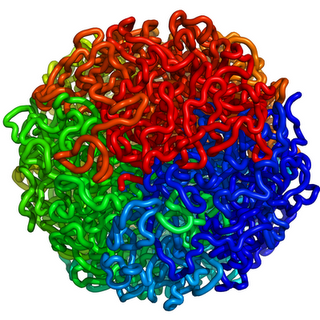 The human genome, when stretched end-to-end, measures two meters long, yet it
is packed compactly inside the cell's nucleus. How does it fold?
What is its topology? How does its physical conformation impact function?
We explore these questions through analysis and visualization of Hi-C
experiments. Hi-C is a proximity ligation assay that relies on
massively parallel sequencing to reveal which parts of the genome are
close to each other in three dimensional space.
We have built a one-click pipeline, called Juicer, that takes in
raw sequencing data and produces heat maps, statistics, and
features that can be used to evaluate the experiment. We have also
created Juicebox, a software visualization package for exploring Hi-C maps. Papers describing
Juicer and Juicebox were published in Cell Systems in 2016.
Also see our PNAS paper, our Cell paper, or for something a little more fun, watch the video!
The human genome, when stretched end-to-end, measures two meters long, yet it
is packed compactly inside the cell's nucleus. How does it fold?
What is its topology? How does its physical conformation impact function?
We explore these questions through analysis and visualization of Hi-C
experiments. Hi-C is a proximity ligation assay that relies on
massively parallel sequencing to reveal which parts of the genome are
close to each other in three dimensional space.
We have built a one-click pipeline, called Juicer, that takes in
raw sequencing data and produces heat maps, statistics, and
features that can be used to evaluate the experiment. We have also
created Juicebox, a software visualization package for exploring Hi-C maps. Papers describing
Juicer and Juicebox were published in Cell Systems in 2016.
Also see our PNAS paper, our Cell paper, or for something a little more fun, watch the video!
Object recognition
 We are building an object recognition
system for aerial video that includes refinement of neuromorphic features,
dictionary learning and feature selection, classification, and tracking.
We are also developing a general framework for object recognition that is
highly configurable, in order to test different kinds of features and
different classification algorithms. We plan to make our architecture
available to other researchers so that they may easily build and test their own systems.
We are building an object recognition
system for aerial video that includes refinement of neuromorphic features,
dictionary learning and feature selection, classification, and tracking.
We are also developing a general framework for object recognition that is
highly configurable, in order to test different kinds of features and
different classification algorithms. We plan to make our architecture
available to other researchers so that they may easily build and test their own systems.
Attribute classification
The display of human actions in mass media and its implications for our society is intensively studied in sociology, marketing and health care. For example, researchers have looked at the relationship between the incidence of characters who smoke in movies and adolescent smoking; the occurrence of drinking acts in movies and the consumption of alcohol; and the impact over time of the evolution of women activities depicted by TV shows. Video analysis for these purposes currently requires hours of tedious manual labeling, rendering large-scale experiments infeasible. Automating the detection and classification of human traits and actions in video will potentially increase the quantity and diversity of experimental data.
In this project, we tackle the problem of automatically finding facial attributes in video. We focus on static attributes that do not change over the course of a track. We want to minimize supervision, and we do so by using unlabeled video to improve generalization. Please see the project page at INRIA and our Parts and Attributes workshop paper in ECCV 2010.
Mobile ASL
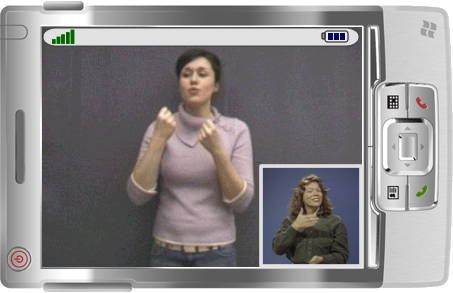 The goal of the Mobile
ASL project is to compress sign language video so that deaf users can communicate
via cell phone. While the deaf community has welcomed new technologies such as
the Blackberry and other PDAs, it is cumbersome to use text messaging when compared
to signing, since the speed of sign language is equivalent to speech. However, with
current compression technology and low mobile phone bit rates, real-time
video transmission is not possible. Our goal is to
make cell phones accessible by supporting real-time compression and transmission of
sign language video.
The goal of the Mobile
ASL project is to compress sign language video so that deaf users can communicate
via cell phone. While the deaf community has welcomed new technologies such as
the Blackberry and other PDAs, it is cumbersome to use text messaging when compared
to signing, since the speed of sign language is equivalent to speech. However, with
current compression technology and low mobile phone bit rates, real-time
video transmission is not possible. Our goal is to
make cell phones accessible by supporting real-time compression and transmission of
sign language video.
Through user studies, we have discovered that deaf users can understand signs at very low frame rates. However, this is not true of finger spelling, which consists of small, specific motion. My goal is to distinguish between signing and finger spelling so we can adjust frame and bit rate to maximize efficiency while still remaining intelligible. We have verified the intelligibility of varying the frame rate and quantified the power savings on the phone. Our machine learning techniques have been successful at distinguishing, in real-time, signing frames from listening frames.
Multimedia
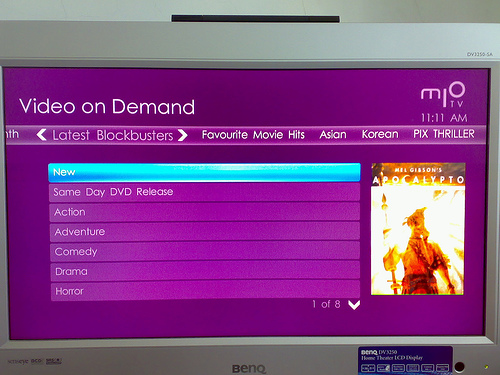 Video-on-demand is a service in which a user interactively selects and downloads
movies and other content. There are two main ways to implement
video-on-demand from the server's perspective. The server could wait
for requests and then react to them, perhaps by bundling requests together.
However, this method requires a two-way communication channel between the server and client.
Some servers, such as satellite TV, don't have two-way capabilities.
The other choice is to proactively broadcast movies that are likely to be on demand.
Since requests for movies follow a Zipf distribution, broadcast methods could serve the
vast majority of on-demand needs. In Data Compression Conference 2006, I detailed
our method for periodic broadcast of compressed variable bit rate movies.
Video-on-demand is a service in which a user interactively selects and downloads
movies and other content. There are two main ways to implement
video-on-demand from the server's perspective. The server could wait
for requests and then react to them, perhaps by bundling requests together.
However, this method requires a two-way communication channel between the server and client.
Some servers, such as satellite TV, don't have two-way capabilities.
The other choice is to proactively broadcast movies that are likely to be on demand.
Since requests for movies follow a Zipf distribution, broadcast methods could serve the
vast majority of on-demand needs. In Data Compression Conference 2006, I detailed
our method for periodic broadcast of compressed variable bit rate movies.
Auction Theory
 Auction theory is the study of problems at the intersection of game
theory, economics, and computer science. Christos Papadimitriou
essentially introduced the area with a
paper
describing
how the internet has spawned new problems that may be answered using
techniques from economics.
Auction theory is the study of problems at the intersection of game
theory, economics, and computer science. Christos Papadimitriou
essentially introduced the area with a
paper
describing
how the internet has spawned new problems that may be answered using
techniques from economics.
In joint work with Atri Rudra, Ning Chen, Nikhil Bansal, Baruch Schieber, and Maxim Sviridenko, we looked at the problem of selling items to impatient bidders. Suppose an online music store wishes to sell unlimited copies of a song to a set of customers, and suppose each customer has a maximum price, an arrival time, and a departure time. If the store sets a price below a customer's maximum price while they are in the store, the customer will immediately buy the song. How can we set prices so as to maximize the store's revenue? We prove tight bounds on the competitiveness of deterministic online algorithms for this model.
Data Compression
 For my qualifying project, I explored data compression of DNA.
Sequitur is an elegant, linear-time
online compression algorithm that also finds structure.
I experimented with using Sequitur to compress DNA sequences.
This work was presented at the
DIMACS Working Group on the Burrows-Wheeler Transform and is published
as UW CSE Technical Report 2007-05-02:
Grammar-based compression of DNA Sequences (paper) and talk.
For my qualifying project, I explored data compression of DNA.
Sequitur is an elegant, linear-time
online compression algorithm that also finds structure.
I experimented with using Sequitur to compress DNA sequences.
This work was presented at the
DIMACS Working Group on the Burrows-Wheeler Transform and is published
as UW CSE Technical Report 2007-05-02:
Grammar-based compression of DNA Sequences (paper) and talk.
Also in the field of data compression, I extended our group's work on MultiStage, a rate control algorithm, to H.264.
The most up to date list of my publications can be found at Google Scholar
Copyright notice: This material is presented to ensure timely dissemination of scholarly and technical work. Copyright and all rights therein are retained by authors or by other copyright holders. All persons copying this information are expected to adhere to the terms and constraints invoked by each author's copyright. In most cases, these works may not be reposted without the explicit permission of the copyright holder.
Journal papers
Preprint: Brian Glenn St Hilaire, Neva C. Durand, Namita Mitra, Saul Godinez Pulido, Ragini Mahajan, Alyssa Blackburn, Zane L. Colaric, Joshua W. M. Theisen, David Weisz, Olga Dudchenko, Andreas Gnirke, Suhas S.P. Rao, Parwinder Kaur, Erez Lieberman Aiden, and Aviva Presser Aiden. A rapid, low cost, and highly sensitive SARS-CoV-2 diagnostic based on whole genome sequencing. bioRxiv, May 2020.
Charles P. Fulco, Joseph Nasser, Thouis R. Jones, Glen Munson, Drew T. Bergman, Vidya Subramanian, Sharon R. Grossman, Rockwell Anyoha, Benjamin R. Doughty, Tejal A. Patwardhan, Tung H. Nguyen, Michael Kane, Elizabeth M. Perez, Neva C. Durand, Caleb A. Lareau, Elena K. Stamenova, Erez Lieberman Aiden, Eric S. Lander and Jesse M. Engreitz. Activity-by-Contact model of enhancer-promoter regulation from thousands of CRISPR perturbations. Nature Genetics 51:1664-1669, November 2019.
Guy Nir*, Irene Farabella*, Cynthia Perez Estrada*, Carl G. Ebeling*, Brian J. Beliveau, Hiroshi M. Sasaki, S. Dean Lee, Son C. Nguyen, Ruth B. McCole, Shyamtanu Chattoraj, Jelena Erceg, Jumana AlHaj Abed, Nuno M. C. Martins, Huy Q. Nguyen, Mohammed A. Hannan, Sheikh Russell, Neva C. Durand, Suhas S. P. Rao, Jocelyn Y. Kishi, Paula Soler-Vila, Michele Di Pierro, Jose N. Onuchic, Steven P. Callahan, John M. Schreiner, Jeff A. Stuckey, Peng Yin, Erez Lieberman Aiden, Marc A. Marti-Renom, C.-ting Wu. Walking Along Chromosomes with Super- Resolution Imaging, Contact Maps, and Integrative Modeling. PLOS Genetics 14(12), December 2018. (*) Co-First Authors.
Rachel E. Gate, Christine S. Cheng, Aviva P. Aiden, Atsede Siba, Marcin Tabaka, Dmytro Lituiev, Ido Machol, M. Grace Gordon, Meena Subramaniam, Muhammad Shamim, Kendrick L. Hougen, Ivo Wortman, Su-Chen Huang, Neva C. Durand, Ting Feng, Philip L. De Jager, Howard Y. Chang, Erez Lieberman Aiden, Christophe Benoist, Michael A. Beer, Chun J. Ye and Aviv Regev. Genetic Determinants of Co-Accessible Chromatin Regions in Activated T Cells Across Humans. Nature Genetics 50(8), July 2018.
Laura Vian*, Aleksandra Pekowska*, Suhas S.P. Rao*, Kyong-Rim Kieffer-Kwon*, Seolkyoung Jung*, Laura Baranello, Su-Chen Huang, Laila El Khattabi, Marei Dose, Nathanael Pruett, Adrian L. Sanborn, Andres Canela, Yaakov Maman, Anna Oksanen, Wolfgang Resch, Xingwang Li, Byoungkoo Lee, Alexander L. Kovalchuk, Zhonghui Tang, Steevenson Nelson, Michele Di Pierro, Ryan R. Cheng, Ido Machol, Brian Glenn St Hilaire, Neva C. Durand, Muhammad S. Shamim, Elena K. Stamenova, Jose N. Onuchic, Yijun Ruan, Andre Nussenzweig, David Levens, Erez Lieberman Aiden, Rafael Casellas. The Energetics and Physiological Impact of Cohesin Extrusion. Cell 173(4), May 2018. (*) Co-First Authors.
James T. Robinson, Douglass Turner, Neva C. Durand, Helga Thorvaldsdottir, Jill P. Mesirov, Erez Lieberman Aiden. Juicebox.js Provides a Cloud-Based Visualization System for Hi-C Data. Cell Systems 6(2), January 2018.
Peter Arenfeldt Larsen, R. Alan Harris, Y Liu, Shwetha Canchi Murali, Christina Campbell, Adam D. Brown, Beth A Sullivan, Jennifer M. Shelton, Susan J. Brown, Muthuswamy Raveendran, Olga Dudchenko, Ido Machol, Neva C. Durand, Muhammad Saad Shamim, Erez Lieberman Aiden, Donna M. Muzny, Richard A. Gibbs, Anne D. Yoder, Jeffrey Rogers, K. C. Worley. Hybrid De Novo Genome Assembly and Centromere Characterization of the Gray Mouse Lemur (Microcebus Murinus). BMC Biology 15(110), November 2017.
Olga Dudchenko, Sanjit S. Batra*, Arina D. Omer*, Sarah K. Nyquist, Marie Hoeger, Neva C. Durand, Muhammad S. Shamim, Ido Machol, Eric S. Lander, Aviva P. Aiden, Erez Lieberman Aiden. De Novo Assembly of the Aedes Aegypti Genome Using Hi-C Yields Chromosome-Length Scaffolds. Science 356 (6333), April 2017. (*) Equal contribution.
Neva C. Durand*, Jim T. Robinson*, Muhammad S. Shamim, Ido Machol, Jill P. Mesirov, Eric S. Lander, Erez Lieberman Aiden. Juicebox Provides a Visualization System for Hi-C Contact Maps with Unlimited Zoom. Cell Systems 3 (1), July 2016. (*) Co-First Authors.
Neva C. Durand*, Muhammad S. Shamim*, Ido Machol, Suhas S. P. Rao, Miriam H. Huntley, Eric S. Lander, Erez Lieberman Aiden. Juicer Provides a One-Click System for Analyzing Loop-Resolution Hi-C Experiments. Cell Systems 3 (1), July 2016. (*) Co-First Authors.
Emily M. Darrow*, Miriam H. Huntley*, Olga Dudchenko, Elena K. Stamenova, Neva C. Durand, Zhuo Sun, Su-Cheng Huang, Adrian L. Sanborn, Ido Machol, Muhammad S. Shamim, Andrew P. Seberg, Eric S. Lander, Brian P. Chadwick, Erez Lieberman Aiden. Deletion of DXZ4 on the human inactive X chromosome alters higher-order genome architecture. PNAS 113 (31), July 2016. (*) Co-First Authors.
Adrian L. Sanborn*, S. S. P. Rao*, Su-Chen Huang, Neva C. Durand, Miriam H. Huntley, Andrew I. Jewett, Ivan D. Bochkov, Dharmaraj Chinnappan, Ashok Cutkosky, Jian Li, Kristopher P. Geeting, Andreas Gnirke, Alexandre Melnikov, Doug McKenna, Elena K. Stamenova, Eric S. Lander, Erez Lieberman Aiden. Chromatin extrusion explains key features of loop and domain formation in wild-type and engineered genomes. PNAS 112 (47), September 2015. (*) Co-First Authors.
Suhas S.P. Rao*, Miriam H. Huntley*, Neva C. Durand, Elena K. Stamenova, Ivan D. Bochkov, James T. Robinson, Adrian Sanborn, Ido Machol, Arina D. Omer, Eric S. Lander, Erez Lieberman Aiden. A Three-dimensional Map of the Human Genome at Kilobase Resolution Reveals Principles of Chromatin Looping. Cell 159 (2014). (*) Co-First Authors.
N. Bansal, N. Chen, N. Cherniavsky, A. Rudra, B. Scheiber and M. Sviridenko. Dynamic Pricing for Impatient Bidders. ACM Transactions on Algorithms, 6 (2), March 2010.
N. Cherniavsky, G. Shavit, M. F. Ringenburg, R. E. Ladner, and E. A. Riskin. MultiStage: A MINMAX Bit Allocation Algorithm for Video Coders. IEEE Transactions on Circuits and Systems for Video Technology, 17 (1), 59-67, January 2007.
Conference papers
N. Cherniavsky, J. Chon, J. O. Wobbrock, R. E. Ladner, and E. A. Riskin. Activity Analysis Enabling Real-time Video Communication on Mobile Phones for Deaf Users. In UIST '09: Proceedings of the ACM Symposium on User Interface Software and Technology, Oct 2009.
N. Cherniavsky, R. E. Ladner, and E. A. Riskin. Activity Detection in Conversational Sign Language Video for Mobile Telecommunication . In IEEE Int'l Conference on Automatic Face and Gesture Recognition, Sept 2008.
N. Cherniavsky, A. C. Cavender, R. E. Ladner, and E. A. Riskin. Variable Frame Rate for Low Power Mobile Sign Language Communication. In ASSETS '07: Proceedings of the Ninth International ACM SIGACCESS Conference on Computers and Accessibility, Oct 2007.
N. Cherniavsky and R. E. Ladner. Practical Low Delay Broadcast of Compressed Variable Bit Rate Movies. In Data Compression Conference (DCC), Mar 2006.
N. Bansal, N. Chen, N. Cherniavsky, A. Rudra, B. Scheiber and M. Sviridenko. Dynamic Pricing for Impatient Bidders. In Symposium on Discrete Algorithms (SODA), Jan 2007.
Workshop papers, invited talks, technical reports
N. Cherniavsky, I. Laptev, J. Sivic, and A. Zisserman. Semi-supervised learning of facial attributes in video. In First International Workshop on Parts and Attributes, in conjunction with ECCV 2010, September 2010.
A. Cavender, N. Cherniavsky, J. Chon, R. Ladner, E. Riskin, R. Vanam, and J. Wobbrock. MobileASL: Overcoming the technical challenges of mobile video conversation in sign language. In LREC 2010 4th Workshop on the Representation and Processing of Sign Languages, May 2010.
J. Chon, N. Cherniavsky, E. A. Riskin, and R. E. Ladner. Enabling Access through Real-Time Sign Language Communication over Cell Phones. In Asilomar Conference on Signals, Systems, and Computers 2009, Nov 2009. (Invited talk)
N. Cherniavsky. Activity Analysis of Sign Language Video for Mobile Telecommunication. Ph.D. thesis. University of Washington, March 2009.
N. Cherniavsky and R. E. Ladner. Grammar-based compression of DNA Sequences. UW CSE Technical Report (TR2007-05-02), presented at the DIMACS Working Group on the Burrows-Wheeler Transform, August 2004.
I have taught one class as the sole instructor and served as a teaching assistant for five others. Additionally, I volunteered to tutor undergraduates throughout graduate school. I also volunteered for Making Connections, a program that aims to help disadvantaged high school women by matching them with mentors.
Data Structures (CSE 326)
I served as the sole instructor for a 28 student class consisting of computer science majors, supervising one teaching assistant. (See course website above.) I taught three weekly lectures, combining previous material with original work; held office hours; prepared a new project, including a new code base with visualization; wrote and graded exams; answered student questions via a newsgroup and private email; and maintained the course website with up-to-date lecture materials and assignments.
Introduction to Computer Science (CSE 142)
I served as one of eleven teaching assistants for the intro computer science course. The size of the class was about 300 and included about half non-majors. I taught two different hour-long weekly sessions, each containing about 30 students. The lecture material was provided by the instructor, but I had some leeway in how to teach it. I chose to use examples, asking the students to help me solve the problem. I also had them work in small groups on pieces of the problem. My duties also included holding office hours for individual help and grading assignments and exams.
Discrete Structures (CSE 321)
I served as one of two teaching assistants for Discrete Structures. I taught a weekly hour-long session attended by around 30 students. I had great leeway to teach what I thought was interesting and relevant. In the student comments, I got high marks for coordinating lecture and section and for the usefulness of section content. My duties also included holding office hours for individual help and grading assignments and exams.
Data Compression (CSE 490g)
I served as the sole teaching assistant for a special topics course on data compression. My duties included website maintenance, providing extra help in office hours, grading assignments and exams, writing solutions to assignments, and setting up and maintaining project code.
Graduate Algorithms (CSE 521 and CSE P521)
I served as one of two teaching assistants for the graduate level algorithms class. The class is quite challenging and one of my hardest jobs was to write good solutions for the homework problems. My duties also included website maintenance, providing extra help in office hours, and grading assignments and exams.
I also served as the sole teaching assistant for the professional master's program (PMP) algorithms class. The needs of the PMP students are different from full-time students, since they are only on campus for the class. I communicated a lot with the students over email, answered questions from both the class mailing list and the message board, wrote solutions to homework problems, and held office hours before class each week. My duties also included website maintenance and grading assignments and exams.


